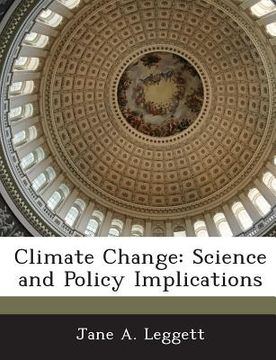Synopsis "Climate Change: Science and Policy Implications"
Almost all scientists agree that the Earth's climate is changing, having warmed by 0.6 to 0.8o Celsius (1.1 to 1.5o Fahrenheit) since the Industrial Revolution. Science indicates that the Earth's global average temperature is now approaching, or possibly has passed, the warmest experienced since human civilizations began to flourish about 12,000 years ago. During the 20th Century, some areas became wetter while others experienced more drought. Most climate scientists conclude that humans have induced a large part of the climate change since the 1970s. Although natural forces such as solar irradiance and volcanoes contribute to variability, scientists cannot explain the climate changes of the past few decades without including the effects of elevated greenhouse gas (GHG) concentrations resulting from fossil fuel use, land clearing, and industrial and agricultural emissions. Over the past 150 years, measured carbon dioxide concentrations have risen by more than one-third, from about 280 parts per million (ppm) to about 380 ppm. The United States contributes almost one-fifth of net global greenhouse gas emissions. Some impacts of climate change are expected to be beneficial (e.g., increased agricultural productivity in some regions), whereas others are expected to be adverse (e.g., drought in some regions, rising sea levels in some coastal areas). Forecasting future climate conditions is challenging, and some major processes remain poorly understood. However, methods are improving to characterize the risks. Scientists have found it is very likely that rising greenhouse gas concentrations, if they continue unabated, will raise the global average temperature above natural variability by at least 1.5o Celsius (2.7o Fahrenheit) during the 21st Century (above 1990 temperatures), with a small likelihood that the temperature rise may exceed 5oC (9oF). The projections thought most likely by many climate modelers are for a greenhouse gas-induced temperature rise of approximately 2.5 to 3.5oC (4.5 to 6.3oF) by 2100.

